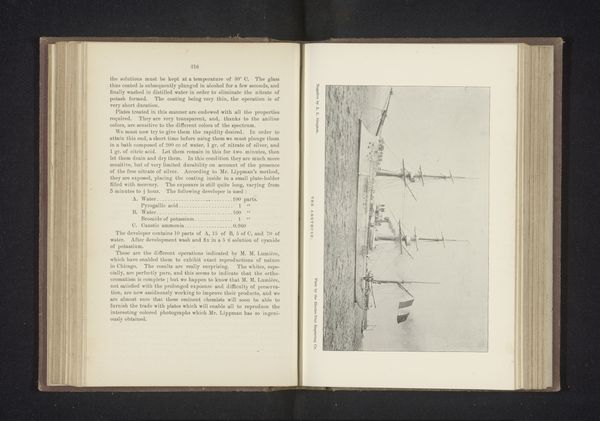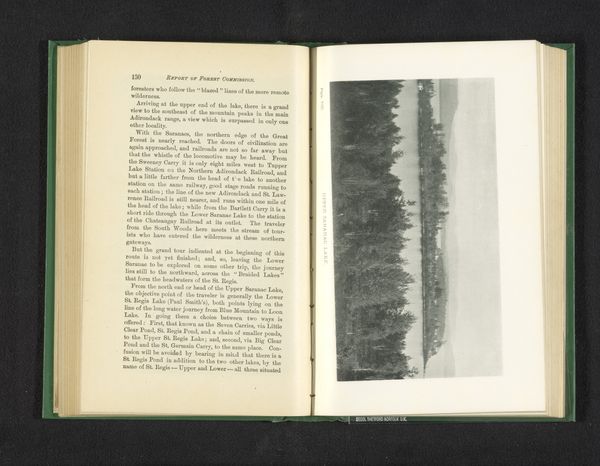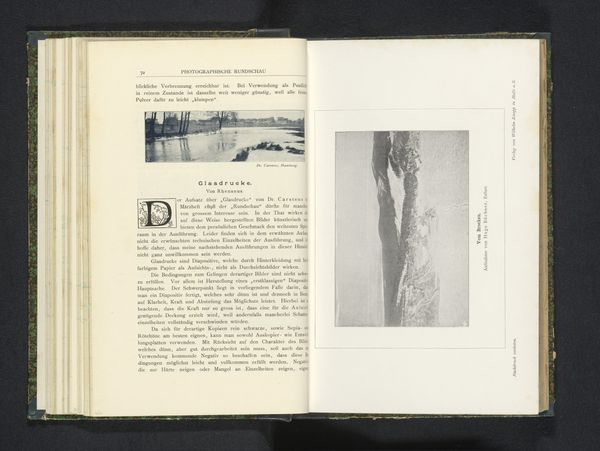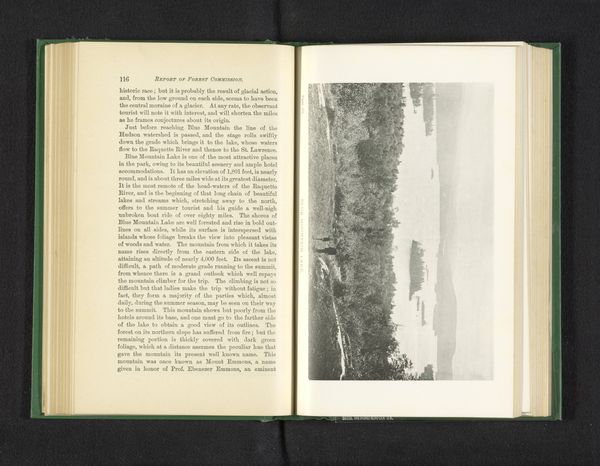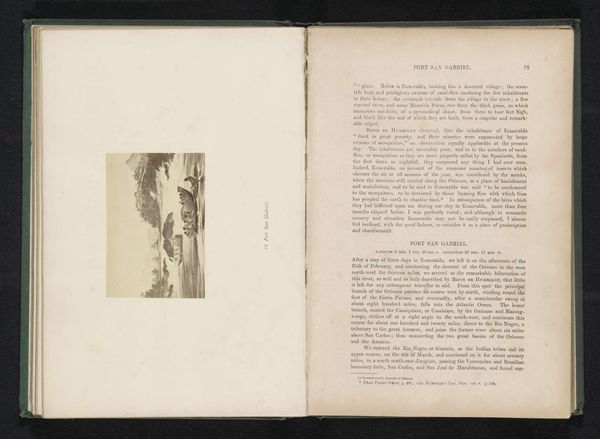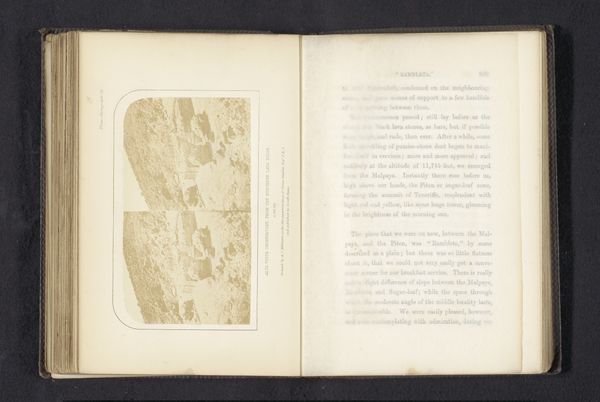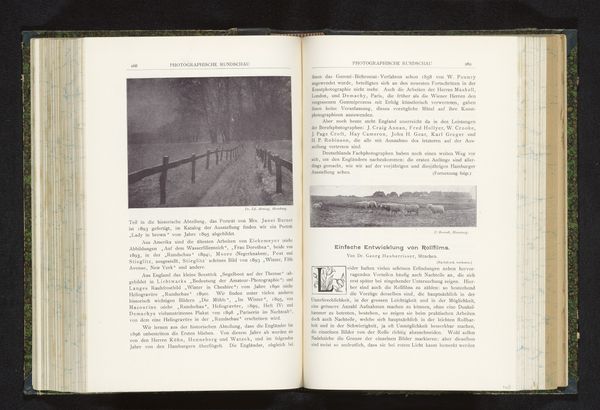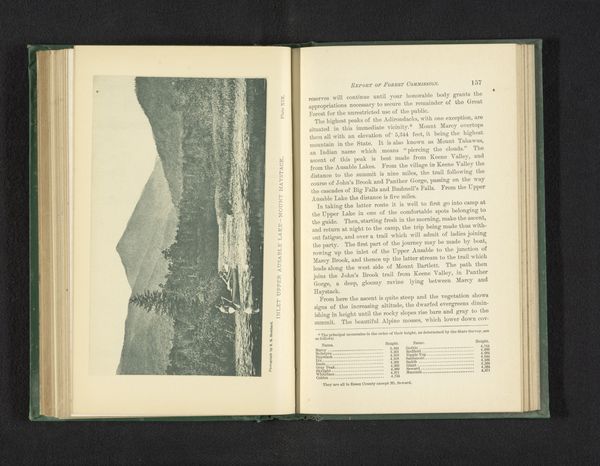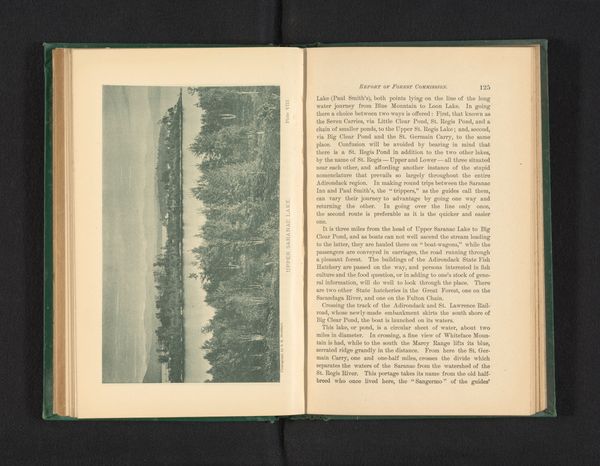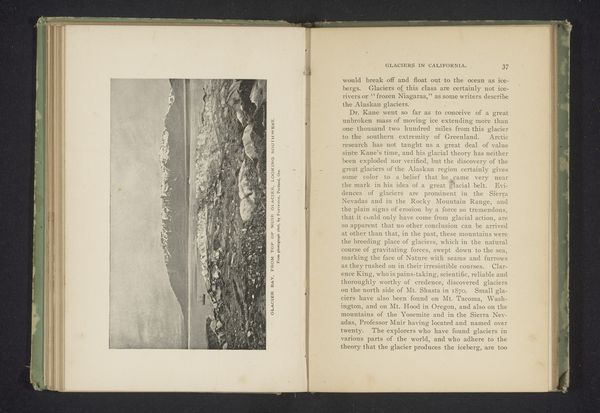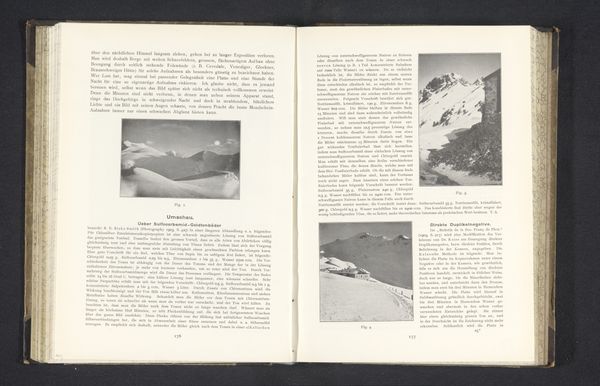
print, photography
#
aged paper
#
paper non-digital material
#
paperlike
# print
#
sketch book
#
landscape
#
personal journal design
#
photography
#
personal sketchbook
#
book mockup
#
journal
#
mountain
#
publication mockup
#
academic-art
#
publication design
Dimensions: height 112 mm, width 157 mm
Copyright: Rijks Museum: Open Domain
Curator: Here we have an image from a publication—"Gezicht op Engelberg," or "View of Engelberg"—dating back to before 1899, attributed to A. Nitzsche. The medium appears to be a print. Editor: It’s striking how immediate the scene feels, even through the distance of time. The high contrast lends a starkness that amplifies the mountain’s grandeur and the quaint arrangement of the buildings below. The materiality of the print, sitting on this old open book, emphasizes a world that's gone or that maybe still exists somewhere. Curator: It’s fascinating how these publications shaped perception. Printed matter had immense power to disseminate idealized visions of places, especially of alpine settings, like Engelberg. Photography used within served to "document" landscapes in a way that colored the perception and tourism of the region. Editor: Right, but even with that layer of construction, look at the visible craft! The textures and paper quality tell their own story. What strikes me is not so much the romantic vision, but how these were mass-produced items. We can tell that Nitzsche produced photography within a rapidly industrializing world where image and experience were available through paper. Curator: Indeed. The industrial process is essential to understand the social context in which landscape photography gains such popularity. Travel and image circulation intersect here. Editor: I also wonder about accessibility. Who was intended to have access to these images? Mass produced objects don’t always mean equal distribution across social and economic classes. How was this view, and therefore the place, consumed, and by whom? Curator: That’s a keen point. These images were instruments in crafting not just visual experience but also a social experience of place. This piece sits in the intersection of aesthetics and socioeconomic influence in fin-de-siècle Europe. Editor: Yes, and by acknowledging these influences, it helps us engage critically with not only what we see, but how, and who benefits from it. Curator: Exactly. It highlights the complexities behind seemingly straightforward landscape scenes. Editor: Precisely, leading us to contemplate both the image and the structures of power intertwined with it.
Comments
No comments
Be the first to comment and join the conversation on the ultimate creative platform.
